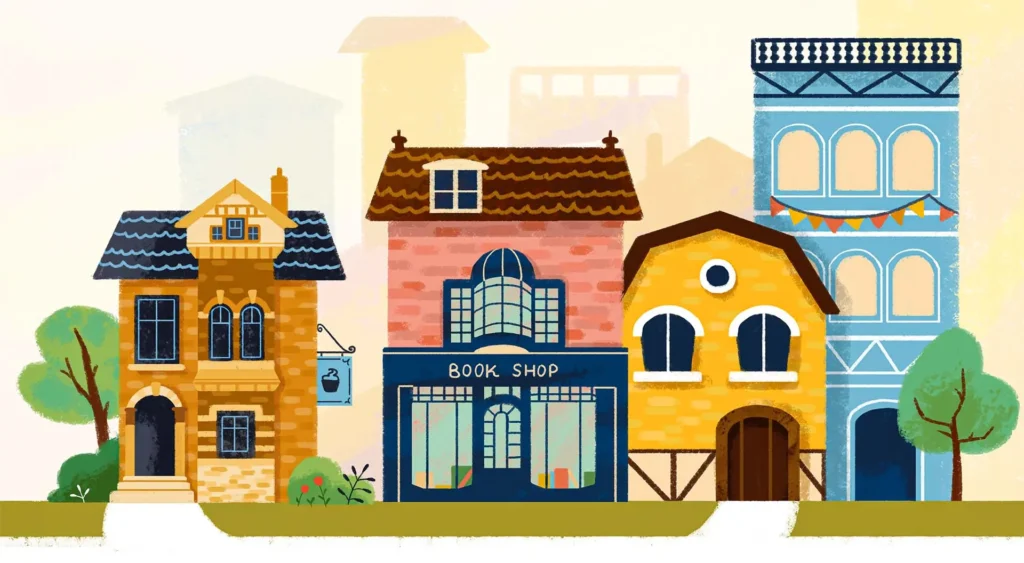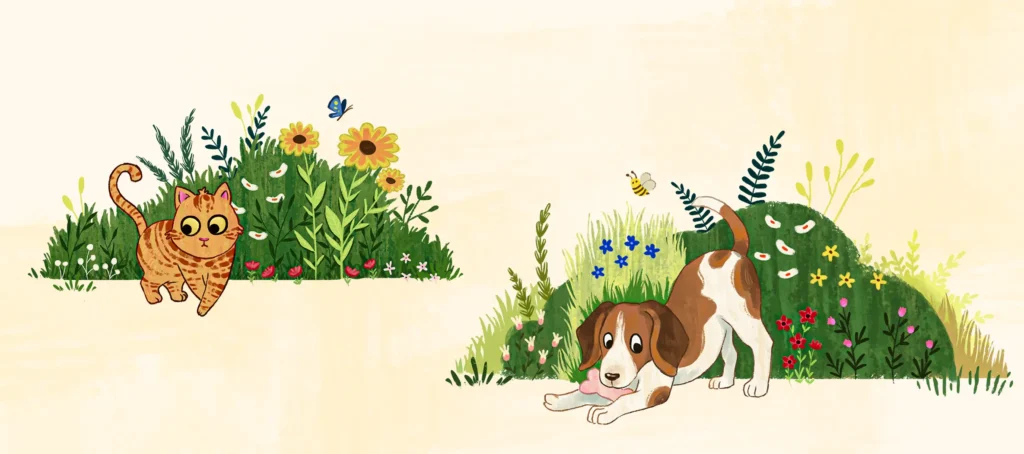If you’ve been in the business long, you’ve probably heard some or all of these before:
- “Draw my dog for my kid’s birthday, I’m willing to pay you $300!’
- “Your artworks are so beautiful, unique and exquisite … I would like to know if I can purchase a few of them as digital NFTs”
- “I came across some of your artwork… would like to buy some to add to my existing art collection… for an upcoming digital exhibition”
These scams are practically copy-pasted at this point, and many of us can spot them from a mile away. But what happens when you come across scammers that don’t use the same tired old script?
Unfortunately, I fell for one of these scammers when I started out as a children’s book illustrator (I’ll share that story at the end of this blog).
I’m writing this so you don’t have to make the same mistakes I did.

So how can we avoid scams and make sure that we’re getting paid for our work?
When most of us start out, the bulk of our customer base are authors, not publishers. While that’s amazing in many ways, it also means that our client base isn’t very regulated. We’re not working with companies that have a reputation to protect. Of course, legitimate authors do have reputations to keep – but scammers don’t.
So what does this mean for us?
We need to know how to spot the signs – and somewhat luckily for us – there are many.
Here’s something that many children’s book illustrators don’t realize, though: scammers don’t all use the same tactics. In fact, I’ve found that there are two main types of scammers you’re likely to encounter, I’ll call them:
Template scammers and groomer scammers.
The signs for each are totally different, so I’ve broken this blog down into two sections.
Template Scammers
You’ve probably seen this type a thousand times before, but I wanted to dedicate a section to it anyway – especially if you’re just starting out as a children’s book illustrator. It’s important to know how to spot the signs.
So what are the signs you’re dealing with a template scammer?
- They approach you with generic praise in broken or overly formal english:
“Hello, your artwork is very good. I want to make book for my daughter.”
“Greetings dear, I would like you to illustrate my book that I need”
- They quickly offer a large sum:
“I will pay $3000 for 12 pages, ok?”
- They stall on contracts
- Payment red flags show up:
“Can I pay with check/money order?”
“Please refund me extra after I pay you.” - Ghost or vanish if you push for a deposit.
- Their profiles are very new, they have no friends or followers. An important thing to note: in Facebook groups, admins can limit newer accounts, which helps reduce scam attempts. However, if a scammer has hacked an older account, those safeguards don’t apply – so always stay vigilant!
- They use generic white names (e.g., Robert Smith, Jessica Taylor)
- They avoid video calls
These types of scammers are very common in facebook groups. They’ll comment on any post you make showcasing your art, or go directly to your direct messages. They also pop up in Instagram and email though – so be on the lookout.

Groomer Scammers
This is where things get tricky. Groomer Scammers don’t have a script, there aren’t any obvious signs like a suspicious-looking profile, and if they’re good at what they’re doing – you might even grow to like them before they screw you over.
Now, I want to be clear: I’m not writing this blog to make you paranoid. My goal is to give you the tools to protect yourself – not to make you distrust everyone who contacts you.
Keep that in mind while you’re reading this section.
Groomer Scammers will very often look like a typical client. They will:
- Reach out like any other potential client
- Engage in genuine conversation
- Share personal stories
- Ask relevant questions about your process
- Talk excitedly about the book they want you to illustrate
- Sometimes even have books already published
And here’s the twist: they might actually be passionate about their book.
They just don’t want to pay you.
So they might do the following instead:
- Agree to your terms but slowly twist boundaries:
“I totally understand. I just need you to start with one sketch so I can visualize it.”
“I’m waiting on payment from Amazon; I’ll send your deposit soon.”
- Make you feel guilty or insecure:
“I thought you trusted me. This is really disappointing.”
“You’re acting very transactional. I’m an artist too, you know.”
- imply you’re being unprofessional for requesting a deposit.
- Ask for small “test” illustrations without payment.
It’s important to clarify something here: not everyone who refuses to pay for a sample is a scammer.
Many authors are nervous too. They may not know how to vet illustrators and want to avoid getting burned themselves. That’s valid.
But you still have the right to say no to unpaid work.
That’s what your portfolio is for – make sure it includes a variety of work samples as well as process videos. You can also refer potential clients to happy past clients for reassurance. If they’re open to it, offer a video call to discuss the project. But if they don’t like conference calls, no worries – you can still share progress shots and updates to keep them in the loop.
Be kind, respectful, and professional.
However – and this is the important bit – protect yourself.

Always Have a Contract – No Matter What
A contract formalizes expectations and protects both you and the client.
You don’t need to feel bad about insisting on one. In fact, if someone refuses to sign a contract, that’s a red flag.
But what should the contract cover?
- Total cost of the project
- Payment structure – milestone and payment deadlines.
- Number of no-charge revisions included at each stage. Ideally, most revisions should happen during the sketching phase to avoid spending hours reworking fully colored pages.
- Cost for extra revisions (beyond the ones included)
- Deliverables – specify how many illustrations, file types, and resolution. Provide 2–3 image sets: a CMYK version for print, an RGB version for ebooks, and, if needed, a line art version for coloring books.
- Usage rights (who owns what, and where the work can be used). Decide what you’re comfortable with before you negotiate anything. Not having full control over your book as an author can be very uncomfortable – but the same is true if you’re an illustrator. Just be clear about it from the get-go so that you don’t waste your or your client’s time.”
- Credit requirements (e.g. “Illustrations by [Your Name]” on the book or website)
- Kill fees – a back-out fee if either party cancels the project. This protects both sides if things don’t go as planned.
There are other things you might want to include, but these are the essentials.
Now a contract is only effective if you enforce it – and that starts with your payment structure.
I usually ask for 10%–15% upfront, but you can adjust this based on your experience in the field and the size of the project. If you’re only starting out and don’t have much to show yet, consider that to an author looking to hire you, a 25–50% advance might be too big of a risk for them. Unfortunately, scams targeting authors are just as common as those targeting illustrators.
If the client is nervous about making a big upfront payment, that’s okay. Just break the project into smaller milestones, with payments due at each step. That way, you’re not working for weeks – or months – without pay.
This method will usually deter most scammers, so make it a golden rule for yourself:
Never, ever, start working before you get your first payment.
It doesn’t matter how friendly the client is, how much you have in common, or how excited they seem. You have to protect yourself. No one else is going to do it for you.
I know it can be hard to push back – especially if you’re conflict-averse or just starting out. But boundaries are part of the job, and learning to enforce them will save you a lot of heartache down the line. Believe me, I’ve been there.

I was also scammed once – learn from my mistakes
When I was just finding my footing in the business, I was approached by a publisher.
I checked their Google business page, read the reviews, looked through their website, and even found the books they had already published. Everything looked legit.
I remember thinking, “This is amazing! I can’t believe an actual publisher reached out to me!”
We signed a contract. I was paid on time. Communication was smooth. The first book I illustrated for them went off without a hitch. I say “them,” but it was really just one woman running the entire operation – she was my only point of contact throughout.
And here’s where I messed up: because I trusted her, I didn’t enforce our contract.
When she came back with a second book and didn’t immediately pay the down payment, I kept working. I even believed her first few excuses. I only started getting suspicious when I was already a third of the way through the book.
Luckily, I had the sense to contact the author whose book I was illustrating – only to find out she had already paid the full amount to the publisher. She was told the money had been passed on to me.
It hadn’t.
I started reaching out to the publisher’s past clients and quickly learned that the glowing Google reviews were the result of blackmail. She would tell her clients, “Leave me a 5-star review or I won’t publish your book.”
The deeper I dug, the worse it got. I eventually discovered she’d been scamming a shocking number of authors and children’s book illustrators.
I got lucky – I only lost about $600. I know people who lost $8,000.
There’s a lot more to this story, but if there’s anything I would like you to take away from it it’s this:
Setting boundaries and enforcing your contract doesn’t make you ‘less nice’.
It’s necessary.
Stay safe out there, and if you need any further advice about a specific situation you might’ve found yourself in – reach out. I’ll try to help you navigate it.

